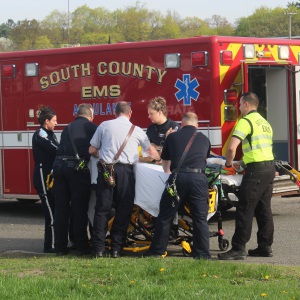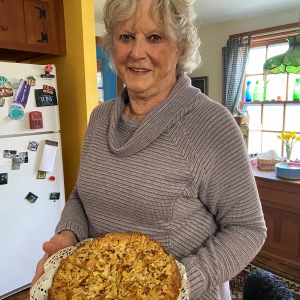Speaking of Nature: Turkey vultures are much smarter than you think
| Published: 06-19-2016 3:46 PM |
Every year, during summertime, I find myself driving down one road or another and passing a deer carcass surrounded by vultures. This seems to occur most frequently on large highways, but every once in a while, I pass this macabre scene on a country road as well. The only thing that is consistent among these events is the fact that they cause my inner photographer so much pain.
On those occasions when I don’t have a camera with me, I tend to pass within 10 feet of these birds. I can almost count their eyelashes with the naked eye, and then I sob gently as I continue on.
Other times, when I do have a camera, I again make a close pass, but I have the opportunity to turn around and attempt a photo.
This, invariably, turns out to be aggravating because I have to steer, pull over safely, and shoot freehand through the passenger side window as the birds fly away. This invariably results in more gentle sobbing. Only once, in the past five years, was I able to pull over and get a decent shot of a vulture perched in a tree in the springtime. That was accompanied by a “woo hoo” of triumph; a rare and wonderful thing in the world of nature photography.
It turns out that even though these birds are called turkey vultures, which in some circles may suggest that they are a bit on the stupid side, they are much smarter than one might think. A car passing by at 60 miles per hour is safe. A car that stops is not, and should be retreated from post haste. So the bird flies and the photographer cries. It’s the natural order of things.
Article continues after...
Yesterday's Most Read Articles
 My Turn: ADUs — The owner is gone, and so is granny
My Turn: ADUs — The owner is gone, and so is granny
 Conway barn destroyed in blaze likely caused by lightning strike
Conway barn destroyed in blaze likely caused by lightning strike
 Greenfield Planning Board votes against proposed ADU amendments
Greenfield Planning Board votes against proposed ADU amendments
 Driver taken to Springfield hospital after 18-wheeler rollover in Shutesbury
Driver taken to Springfield hospital after 18-wheeler rollover in Shutesbury
 Athol man to serve five to seven years on child abuse charges
Athol man to serve five to seven years on child abuse charges
 Northfield man dies in Erving motorcycle crash; Bernardston man injured in Deerfield crash
Northfield man dies in Erving motorcycle crash; Bernardston man injured in Deerfield crash
Every spring, for the past 10 years, I have noticed a group of turkey vultures in my neighborhood. About a mile from my house, there is an old abandoned “farm” that has a large barn and a smaller, single-story stable. The larger barn was left with its hayloft door open, and I have a feeling that this is a very attractive nesting area for those vultures, which may explain their constant presence.
So, with a potential nest of hungry vultures just down the road, it seemed reasonable that a nice deer carcass might be a real hot item. The only problem with this idea is that it is completely illegal. If I were caught with a dead deer in the trunk of my car, I would have a lot of explaining to do. Thus, the deer option is out, but deer are not the only animals that get hit by cars.
Promise that you won’t tell my wife, but a couple weeks ago, I grabbed a 5-gallon bucket, jumped in my car and went for a ride. I picked up a rabbit, a woodchuck, two gray squirrels and a chipmunk in very short order. Then, when Susan wasn’t looking, I put the collection in a hard-to-see area of my lawn near my deck and waited.
The day passed without event, and the first night also passed without any signs of disturbance, which was welcomed news because I was worried that raccoons might drop by and clean me out. This makes perfect sense, because as with any new birdfeeder, it takes a while for the locals to even realize what is going on. Think of it this way: if someone placed a medium-rare Delmonico steak, a baked potato with butter and sour cream and a nice cold beer behind your garage without telling you about it, how long might it take you to find it?
After a day or two, your attention might be pointed in that direction by your nose, and that is exactly how turkey vultures operate, as well. They specialize on finding and consuming dead animals and they use their noses to find their food. It turns out that the turkey vulture (Cathartes aura) has an extremely sensitive sense of smell and is capable of detecting the scent particles of rotting flesh at an incredibly low level of just a few parts per billion.
To understand how a turkey vulture forages, you simply need to use your imagination. Launch yourself into the air, gain some altitude and start sniffing. Move back and forth across the landscape, sniffing all the while, until you pick up that faint smell of lunch. If it helps, just imagine that you pick up the faintest smell of hamburgers cooking on an outdoor grill.
Now, double back and move upwind. Each time you cross the scent plume, double back and move upwind, noticing that the scent slowly intensifies. If you double back and suddenly lose the scent, then you know that you just passed over the source. Move down wind and start dropping down toward the ground. Lunch is somewhere close, just waiting for you. This is what I hoped would happen in my backyard, before the smell of dead animals became strong enough for my beautiful wife to pick up on it.
So, it was on a Sunday morning, and Susan and I were sitting on the couch talking about our plans for the summer. Suddenly a vulture made a low pass over my backyard (you can’t miss a bird with a wingspan that is close to six feet!) and I knew the game was afoot.
Susan was thrilled to see this bird make a second pass, and then lightning struck when the vulture landed on the post to one of my bluebird boxes. The box was actually occupied by a pair of wrens at the time, and they were extremely unhappy with their new visitor. The vulture simply didn’t pay them any attention.
My camera was out in a flash, and I took a few quick shots through my kitchen window, but they were terrible. Shooting perpendicularly through clean window glass can work, but at a 45-degree angle through double-paned windows is a recipe for failure. So, I tried opening the kitchen door and shooting through the uprights on the porch railing. Susan held the door for me, and the photos were of much better clarity, but the uprights got in the way of a full body shot. There was only one thing left to try.
I opened my kitchen window and stood on a chair so I could get above the railing. I was happy to try this because the deck was keeping the pile of vulture food hidden from Susan. Then I had to lean upward and forward to get the help of the window frame, which steadied the inevitable shaking that comes with trying to balance at an odd angle with your eyes basically shut. I ended up taking more than a hundred photos before I got “the one.”
Look for turkey vultures soaring in big circles in our local skies. The distinctive marks of a turkey vulture in flight are the long tail, the black “T’ of the body and wings against the lighter gray of the wing feathers and the extremely small head. Now, if you’ll excuse me, I’m going to go get a steak dinner.
Bill Danielson has worked for the National Park Service, the US Forest Service, and theMassachusetts State Parks. He has been a professional writer and nature photographer for 19 years and he also works as a high school biology and physics teacher. Visit www.speakingofnature.com for more information, or go to Speaking of Nature on Facebook.
]]>






 The dessert to bring to your next potluck: This easy, elegant torte is a crowd favorite
The dessert to bring to your next potluck: This easy, elegant torte is a crowd favorite Muffins for Presidents Day: A recipe inspired by John and Abigail Adams
Muffins for Presidents Day: A recipe inspired by John and Abigail Adams Speaking of Nature: Signs of a lucky escape: L’il Stumpy’s tail of adventure
Speaking of Nature: Signs of a lucky escape: L’il Stumpy’s tail of adventure Say cheese this New Year’s Eve: The surprisingly fascinating history of cheese balls
Say cheese this New Year’s Eve: The surprisingly fascinating history of cheese balls
